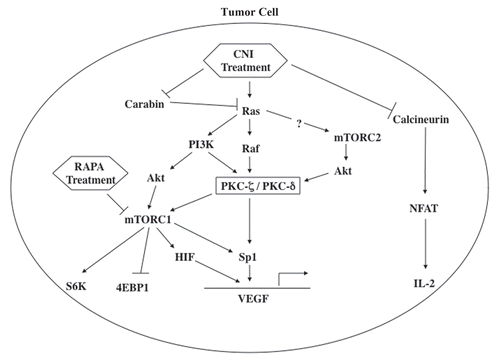Figures & data
Figure 1 Potential crosstalk among Ras, PKCζ/PKCδ and the mTOR signaling pathway(s) regulating calcineurin inhibitor (CNI)-induced VEGF overexpression in renal cancer cells. Following CNI treatment, the Ras-PKC pathway becomes activated and promotes transcriptional activation of VEGF through the transcription factor Sp1. Carabin may play a significant role in CNI-induced Ras activation. CNI-induced and Ras-PKC-mediated signals can also be channeled through mTOR for the regulation of VEGF expression; Ras- and PKC (PKCζ/PKCδ)-mediated signals can promote the activation mTOR complex1 (mTORC1). Together, mTOR may act as a critical intermediary signaling molecule for CNI-induced VEGF overexpression in renal cancer cells.
